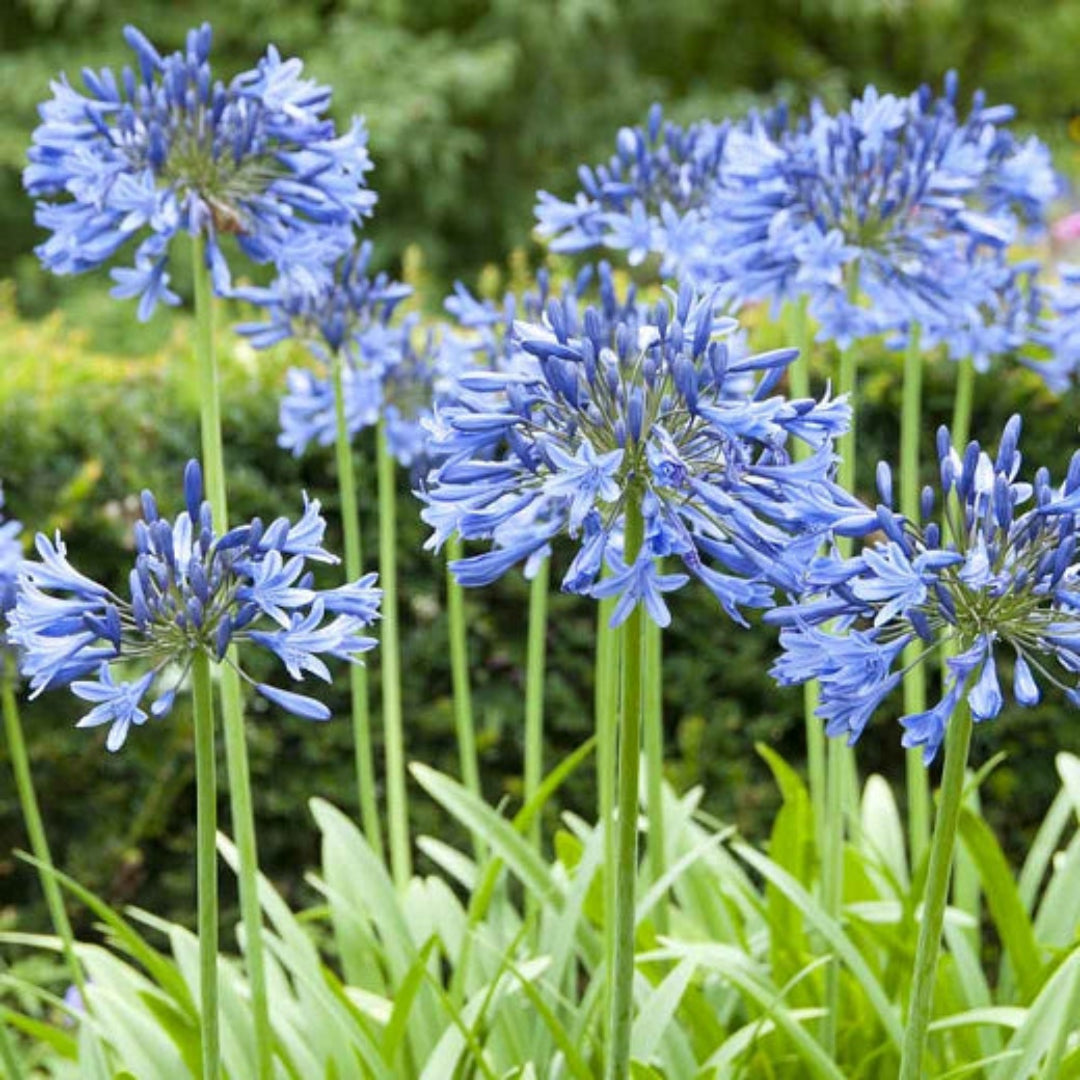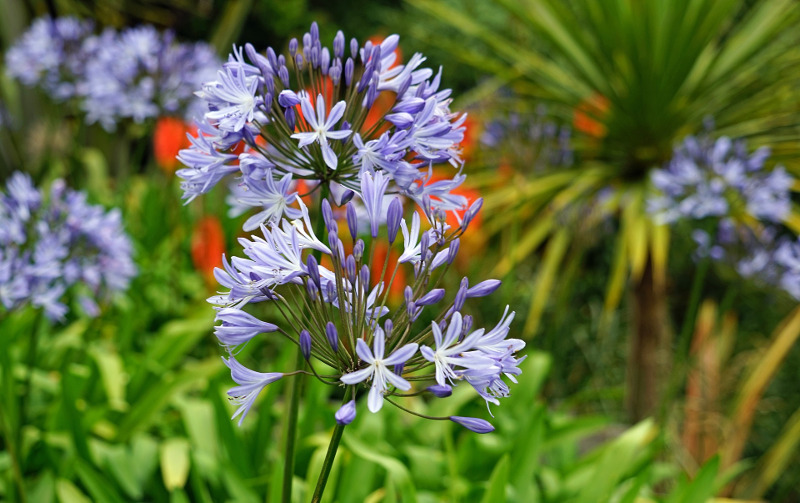Typical Agapanthus Issues and Exactly How to Address Them
Letting Loose the Secret to Successful Agapanthus Growing: Tips and Techniques for a Flourishing Yard
In the realm of gardening, cultivating agapanthus efficiently calls for a tactical approach that incorporates numerous elements of plant care. With mindful focus to information, one can open the keys to supporting these stunning flowers, resulting in a yard that prospers with elegance and vibrancy. By understanding the subtleties of agapanthus growing, one can create an atmosphere where these plants grow and bloom perfectly. In the adhering to conversation, we will check out crucial ideas and methods that will assist you towards a thriving agapanthus yard, offering understandings into finest methods, dirt problems, sprinkling techniques, and more.
Planting Agapanthus: Ideal Practices
When growing Agapanthus, correct dirt preparation is important for ensuring successful growth and advancement of these attractive flowers. Agapanthus, typically referred to as Lily of the Nile or African lily, thrives in well-draining dirt with a slightly acidic to neutral pH degree - Agapanthus. Before growing, it is essential to amend hefty clay soils with raw material such as compost or peat moss to boost drainage and offer crucial nutrients for the plants
To plant Agapanthus, pick a place that receives full sunlight to partial color, as this will advertise healthy and balanced development and bountiful blooming. Dig an opening twice the size of the plant's root ball and put the Agapanthus at the very same deepness it was previously growing. Gently backfill the hole with soil, weighing down securely to remove any type of air pockets around the origins.
Water the freshly grown Agapanthus extensively and continue to maintain the soil uniformly wet, especially during the plant's energetic expanding season. Agapanthus. Using a balanced fertilizer once a month can even more support the plant's growth and blooming. By adhering to these finest techniques for growing Agapanthus, you can develop a stunning display screen of these exciting flowers in your yard
Suitable Soil Issues for Agapanthus
For optimum growth and growing success of Agapanthus plants, making certain the soil conditions are perfect is important. Agapanthus prefers dirt that is rich in nutrients, so integrating a balanced fertilizer during the growing period can promote healthy growth and dynamic blooms.

Watering and Feeding Tips
To make certain healthy growth and vibrant flowers, proper watering and feeding strategies are essential for successful Agapanthus cultivation. Agapanthus plants benefit from routine watering, specifically throughout the growing season.
When it concerns fertilizing Agapanthus, a balanced plant food with equal components nitrogen, phosphorus, and potassium can be used in the spring to advertise healthy growth and blooming. Slow-release fertilizers are ideal for giving nutrients progressively over a prolonged duration. Avoid over-fertilizing, as this can bring about extreme vegetation growth at the expense of blossoms.
In addition, integrating raw material like garden compost into the soil can boost nutrient degrees and enhance soil framework, aiding in the total wellness of the Agapanthus plants. By following these watering and feeding ideas, garden enthusiasts can ensure their Agapanthus plants flourish and produce magnificent display screens of blossoms.
Trimming and Deadheading Methods
Correct trimming and deadheading strategies play a critical function in keeping the health and wellness and aesthetics of Agapanthus plants, enhancing the crucial practices of watering and feeding for effective cultivation. Trimming Agapanthus entails eliminating spent blossom you could try this out heads, dead or yellowing fallen leaves, and general shaping of the plant to promote much better growth. Deadheading, the process of removing discolored blossoms, not only improves the plant's appearance but additionally urges further flowering.
When deadheading Agapanthus, it is recommended to clip off the flower stem at the base making use of sharp, clean shears. This procedure redirects the plant's energy from seed manufacturing back right into origin and foliage development, promoting a healthier and extra durable plant. Normal deadheading can expand the flowering duration of Agapanthus and protect against self-seeding, which can result in congestion.
In regards to trimming, Agapanthus generally benefits from a light trim after blossoming to clean the plant and urge fresh growth. Reducing the spent flower stems and getting rid of any kind of broken or dead foliage aids preserve the plant's navigate to this website vigor and total look. However, it is necessary to avoid reducing right into the crown of the plant, as this can compromise its health.

Protecting Agapanthus From Pests and Diseases
Executing efficient parasite and condition administration techniques is vital to securing the health and vigor of Agapanthus plants in cultivation. One usual parasite that affects Agapanthus is the Agapanthus borer, a caterpillar that passages right into the plant, triggering damages to the leaves and blossoms.
In enhancement to pests, Agapanthus are susceptible to diseases such as root rot and fungal fallen leave places. These concerns can usually be protected against by making certain appropriate drainage and preventing overwatering. Affected components of the plant must be quickly removed to protect against more spread if signs of illness appear. Fungicides might likewise be used as a therapy procedure, following the supplier's guidelines very carefully. By staying cautious and resolving insect and illness issues promptly, garden enthusiasts can assist their Agapanthus flourish and prosper.

Verdict
In verdict, effective cultivation of agapanthus calls for appropriate planting techniques, suitable soil problems, ample watering and feeding, regular trimming and deadheading, and defense from parasites and diseases. By following these tips and tricks, garden enthusiasts can guarantee a prospering yard loaded with gorgeous agapanthus flowers. Agapanthus. Keep in mind to preserve regular care and attention to detail look at here to advertise the health and wellness and durability of these magnificent plants
When planting Agapanthus, proper dirt prep work is important for ensuring effective development and growth of these attractive blossoms.Water the newly planted Agapanthus thoroughly and proceed to keep the dirt uniformly moist, particularly during the plant's active growing season.For optimal growth and blooming success of Agapanthus plants, making certain the dirt conditions are excellent is important. When planting or hair transplanting Agapanthus, guarantee the dirt is well-prepared to offer the necessary structure for the plants to develop themselves successfully. One typical insect that affects Agapanthus is the Agapanthus borer, a caterpillar that tunnels into the plant, causing damages to the flowers and leaves.